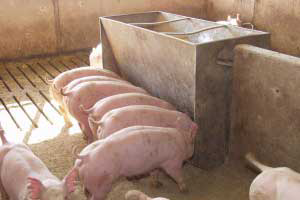EC: Depend on science, not ‘precautionary principle’

The ‘precautionary principle’ was used to ban antibiotic growth promoters in the 1990’s – surely we have better, scientific ways these days to assess and manage risk rather than speculation and hysteria from lobbyists?
Avoparcin, which had been used as an antibiotic growth promoter for nearly 10 years by the feed industry, was banned because on the human medical side, they were using a related drug, vancomycin, another glycopeptide, for the treatment of MRSA (methicillin-resistant Staphylococcus aureus) in man. It was thought that vancomycin-resistant enterococci (VRE) bacteria carrying resistance genes might spread from pigs and especially broilers to man and cause resistance to these bacteria in hospital-induced (nosocomial) infections. This seemed to make good sense at the time, assuming that there was probably some data to support it – but was there?
The Danes reported on the incidence of glycopeptide resistance in enterococci (E. faecalis and E. faecium) in pigs, broilers and man (Danmap, 2007 & 2011) and showed that when avoparcin was withdrawn in 1996 that the incidence of resistance in pig E. faecium steadily fell from approximately 20% to 2-3% and in pig meat it was zero anyway. Resistance in broilers and broiler meat was initially much higher at 75% and 20% respectively but also fell away with time. They were using a massive 24,117 kgs of avoparcin at the time (Danmap, 1999). Resistance to E. faecalis in pigs was zero, however. The incidence of resistant E. faecium in healthy humans was not reported until 2002, 6 years after the ban and basically that was zero but up to 2% in 2005 (see Figure 1) when human use had risen to only 51kg of vancomycin. Yet, there was no reported problem in man at the time.
Lester and others (2006) from Denmark reported on the successful, artificial transmission of vancomycin resistance by E. faecium in man by administering milk containing many millions of bacteria (107). This is equivalent to a couple of grams of faeces (like a portion of mustard) smeared on to a pork chop or steak – so it may not be surprising that they were able to infect man and facilitate transmission of resistance but only in 50% of infected cases. Remember, cooking meat will kill enterococci and thereby, will also stop transmission of resistance.
In the UK, the monitoring of glycopeptide resistance in pigs and man was not routinely being reported in the nineties. However, on a voluntary basis, E. faecalis bacteraemias were being collated by the Health Protection Agency (HPA) from a number of hospital health authorities between 1990 and 2005. Only 1-7% of the isolates reported were resistant a maximum of 59 cases/year. A survey of vancomycin resistance data was carried out in 2000 (4 years after the ban of avoparcin). It showed that the majority of enterococci bacteraemia cases (total 2342) were caused by isolates of E. faecalis in man (74%) and E. faecium (26%). Of those isolates, where vancomycin resistance data was reported, E. faecalis was 11% (potentially 190 cases/year) and E. faecium was higher at 27% (potentially 165 cases/year). From 2004 it was made compulsory to report human cases to the HPA for collation (see Figure 2).
At the time of the ban of avoparcin in the EU in 1997, there were very few reported cases of VRE but it was only being voluntarily reported. It was not until 2004 that a more accurate figure was reported (7 years after the ban of avoparcin) and this increase coincided mainly with a MRSA epidemic going on in UK hospitals, due to poor hygiene procedures and vancomycin was used to treat the infections. As hospital hygiene has improved, so have the reported cases of VRE fallen by 38%.
From these two case studies, it can be seen that there was little or no evidence of transmission of VRE from animals to man, especially E.faecalis, the more common infection in man, in spite of a massive use of avoparcin in animals. It may not be surprising, as properly cooked meat prevents transmission. They were also not monitoring properly vancomycin resistance at the time of the ban of avoparcin so they could not know whether there was an impact. Also subsequent human use of similar antibiotics had more of an effect on induction of resistance in man, as did improving hospital hygiene practices have on reducing it.
This resulted in the ‘precautionary principle’ being invoked to ban avoparcin and the other growth promoters and was based on assumptions rather than scientific data and principles. It was not defended by the veterinary profession at that time, as growth promoters were primarily used by the feed industry without a prescription and therefore not their concern. However, vets were left to pick up the pieces (as usual) when things went wrong, as it was underestimated the disease prevention effects of growth promoters and the resulting consequences of removing them. In a way, it is ironic that vets are being blamed now for the increase in antimicrobial use and irresponsible use in animal medicine, when really we could blame the regulators for these unforeseen consequences. Surely, we have learnt from our past mistakes and the European Commission (EC) will put into practice sound principles on antimicrobial use in the future, based on knowledge rather than pure speculation and hysteria?







